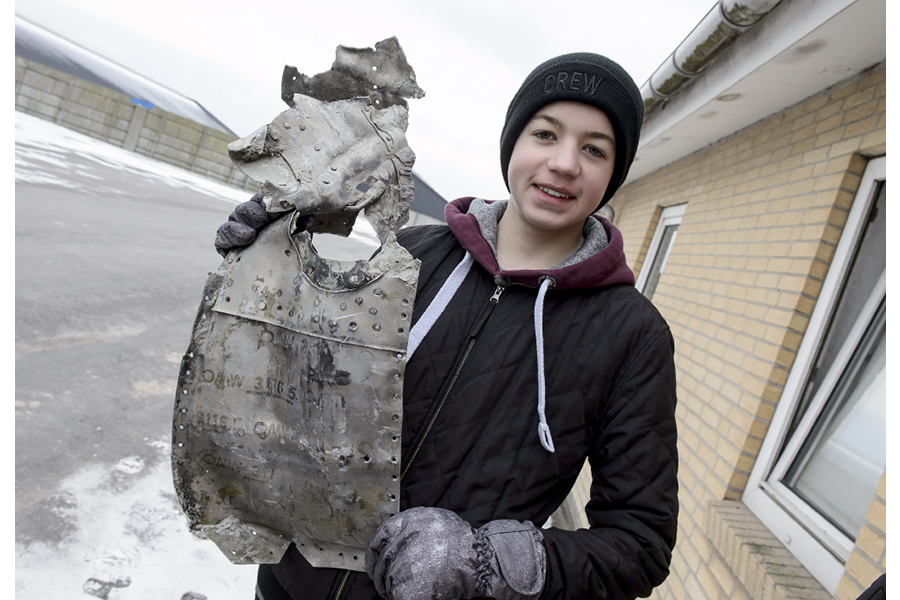Danish teen and dad find WWII plane wreckage on their farm
Loading...
Klaus Kristiansen’s grandfather “was [always] telling a lot of stories,” the Danish farmer remembers. In one, a German fighter plane crashed on the family’s Northern Jutland farm in 1944, as the elder Kristiansen was baking Christmas cookies.
With Denmark then in its fourth year of Nazi occupation, the elder Kristiansen stayed away from the wreck. He assumed that, sometime between the crash and the end of the war, a German military team had removed it.
Klaus never took that yarn seriously, until he and his 14-year-old son Daniel dug up the wreckage of what it is believed to be a Messerschmitt Bf 109 aircraft.
"When my son Daniel was recently given homework about World War II, I jokingly told him to go out and find the plane that is supposed to have crashed out in the field,” Mr. Kristiansen told Danish media.
Thinking that Daniel might at least find some “old plates or something” to include with his assignment, the two went out into the fields with a metal detector.
When it beeped – and hand shovels yielded nothing – they borrowed a neighbor’s backhoe, turning up thousands of metal fragments, a Daimler-Benz aircraft engine, and, eventually, what appears to be the bones and uniform of a German pilot, likely from nearby Aalborg Air Base.
Kristiansen, who has lived on the farm for more than 40 years, now concedes that his grandfather was right with this particular story.
“Some of them were not true, and some of them were true – but this one was true,” he told the BBC. “Maybe I should have listened to him a bit more when he was alive!"
The airplane had never been removed by German troops, as Klaus’s grandfather assumed. Sunk into the marshy soil and covered with grass, it lay waiting for discovery by his great-grandson.
It’s unlikely that Daniel’s teacher has ever seen research results this impressive. But Europe is still littered with the remnants of World War II. Me-109 wrecks like these have been found from the waters off Crete to a frigid lake in northern Russia. And just last week, a London neighborhood was evacuated after construction workers discovered an unexploded German bomb a British Army bomb disposal team were called in to remove.
After the Kristiansens reported their discovery, ordnance disposal experts removed the aircraft’s ammunition. Now, The Historical Museum of Northern Jutland is examining papers, a small book, and other personal effects found among the wreckage.
These could reveal the pilot’s identity. More than 70 years after the end of World War II, Kristiansen hopes that his and son's find will bring some closure to a family in Denmark’s former enemy.
"Probably there is a pilot who will be buried now in Germany," he told the BBC. "I would hope so."








